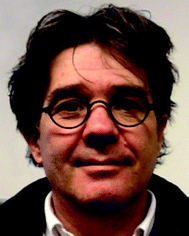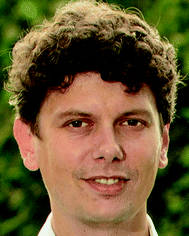Chemical systems out of equilibrium
Jan H.
van Esch
 a,
Rafal
Klajn
b and
Sijbren
Otto
a,
Rafal
Klajn
b and
Sijbren
Otto
 c
c
aDepartment of Chemical Engineering, Delft University of Technology, van der Maasweg 9, 2629 HZ Delft, The Netherlands. E-mail: j.h.vanesch@tudelft.nl
bDepartment of Organic Chemistry, Weizmann Institute of Science, Rehovot 76100, Israel. E-mail: rafal.klajn@weizmann.ac.il
cCentre for Systems Chemistry, Stratingh Institute, University of Groningen, Nijenborgh 4, 9747 AG Groningen, The Netherlands. E-mail: s.otto@rug.nl
Chemistry has for most of its history focussed on the synthesis of systems that are stable. This makes perfect sense, as stable molecules or materials are easy to make, store, transport, sell, and utilise. Thus, the emphasis in teaching and research in chemistry has traditionally been on thermodynamically stable systems, i.e., systems at equilibrium. Non-equilibrium states and the associated kinetic processes have of course also received attention, but usually only as transient regimes in synthesis or preparation processes that lead to the final equilibrium state.
In stark contrast, in living systems the relevant thermodynamic state is not that of equilibrium (which would correspond to death). Life exists far from equilibrium and it is continuously kept there by processes that dissipate energy. Thus, there used to be a profound difference in the thermodynamics of chemical processes in biology and the way that synthetic chemical systems were approached.
However, in recent years chemists have become increasingly aware of this difference, and also of the additional functional potential that synthetic chemical systems can acquire when kept away from equilibrium. For example, phenomena like motion, bistability, oscillations, chiral symmetry breaking, performance of work, and ultimately life are only possible away from equilibrium. This awareness has spurred efforts to deliberately prepare and maintain synthetic chemical systems out of equilibrium. This themed issue gives an overview of the state of the art in this new exciting direction in chemistry.
Much of the motivation and inspiration in the design of non-equilibrium chemical systems stems from biology. In particular, the dynamic assembly of microtubules is often quoted as a prime example of the concept of non-equilibrium and dissipative assembly. In their review of this area, Hess and Ross describe how the microtubule system functions and how it can be engineered with the aim of creating autonomous (bio)chemical robots (DOI: 10.1039/C7CS00030H).
It has also become possible to make systems that do not utilise any components from biology and are completely synthetic, but this needs tools that allow tapping into energy sources. Hecht and Kathan review the progress of a very important and attractive tool in this context: photoswitchable molecules (DOI: 10.1039/C7CS00112F). They describe the use of light as an energy source to populate metastable states with temporal and spatial resolution.
Coupling systems to an energy source such as light, or, alternatively, changes in redox state or chemical reactions with high-energy reagents, can result in work being performed. Stoddart, Astumian and coworkers describe the operational principles of molecular machines and how these can extract energy from different sources; they also highlight recent implementations thereof (DOI: 10.1039/C7CS00068E).
A key approach towards out-of-equilibrium materials is the self-assembly of smaller building blocks, ranging from small molecules to proteins and even colloidal particles. In a tutorial review, Hermans, de Greef and co-authors (DOI: 10.1039/C7CS00121E) describe how the different out-of-equilibrium approaches to self-assembled materials can be distinguished, and which strategies in supramolecular polymerisation have emerged to direct the self-assembly process across the energy landscape towards a kinetically trapped, yet specific sophisticated static architecture.
One way to escape from these kinetic traps and arrive at truly dynamic systems is to maintain the system far-from-equilibrium through the continuous dissipation of energy. Pioneering examples of dynamic materials created through energy-driven, dissipative self-assembly are reviewed by van Esch, Eelkema, Boekhoven and coworkers (DOI: 10.1039/C7CS00246G), and are shown to already display intriguing properties like self-healing and adaptive behavior.
Such fuel-driven dynamic materials are key for the development of systems that can autonomously perform energy-consuming functions like motility, timed operation, sensing, adaption, and communication. Walther and Merindol (DOI: 10.1039/C6CS00738D) illustrate, with examples from nature and synthetic systems, how out-of-equilibrium fuelled assembly with feedback control may ultimately lead to interactive, life-like materials.
Out-of-equilibrium chemical systems can also be derived from colloidal rather than molecular-scale building blocks. In this context, a lot of attention has been devoted to micron-sized, self-propelled particles. In their tutorial review, Sen, Golestanian, and Illien (DOI: 10.1039/C7CS00087A) focus on the physical mechanisms behind phoretic motion, that is, the propulsion of small particles driven by local field gradients.
Beyond such fuelled motion of individual colloids, Granick and coworkers focus on the collective mobility of active matter (DOI: 10.1039/C7CS00461C). The authors systematically discuss how tailoring the structure of individual particles can affect the particle–particle interactions, which in turn gives rise to complex patterns akin to flocks of birds or schools of fish.
An attractive approach to study non-equilibrium structures and processes relies on confining the interacting entities within two-dimensional microfluidic channels. Focusing on micron-scale droplets as a model system, Tlusty, Bar-Ziv and co-authors argue that such microfluidic devices are ideally suited to study a range of non-equilibrium phenomena, including dynamical phase transitions, effects of external feedback, and the emergence of dynamic memory (DOI: 10.1039/C7CS00374A).
The issue is concluded by a visionary contribution from Grzybowski, Fitzner and coworkers, who provide us with perspectives on further development of the field (DOI: 10.1039/C7CS00089H). The authors point out that, rather than constructing ever-new dynamically self-assembling systems, increasing focus should be on applying these assemblies as key elements of more complex, networked chemical systems.
We are very grateful to the contributing authors for their efforts and the insights that they have provided. We hope that this collection of reviews will spark the interest of scientists outside the field and entice them to enter it and further motivate people within the field to keep pushing the boundaries. The functional potential of non-equilibrium chemical systems, particularly those that are continuously fuelled, is huge and is only yet starting to be exploited.
| This journal is © The Royal Society of Chemistry 2017 |



